Binary Number System
Here we will discuss about the binary number system we already know binary numbers play a vital role in the design of digital computers.
Hence a detailed discussion of binary number system is given in this section. Binary number system uses two symbols 0 and 1 and its radix is 2. The symbols 0 and 1 are generally called BITS which is a contraction of the two words Binary digits.
An n-bit binary number of the form an-1 an-2 ….. a1 a0 where each ai (i = 0, 1, …. n - 1) is either 0 or 1 has the magnitude.an-1 2n-1 + an-2 2n-2 + …….+ a1 21 + a020.
For fractional binary numbers, the base has negative integral powers starting with -1 for the bit position just after the binary point.
The bit at the extreme left of a binary number has the highest positional value and is usually called the Most Significant Bit or MSB. Similarly, the bit occupying the extreme right position of a given binary number has the least positional value and is referred to as the Least Significant Bit or LSB.
To facilitate the distinction between different number
systems, we generally use the respective radix as a subscript of the number.
However the subscript will not be used when there is no scope of confusion.
In binary number system a few examples on binary numbers and their decimal equivalents are given below:
1011012 = 1 × 25 + 0 × 24 + 1 × 23 + 1 × 22 + 0 × 21 + 1 × 20= 32 + 0 + 8 + 4 + 0 + 1
= 4510
The above results can be more clearly expressed in the following manner:
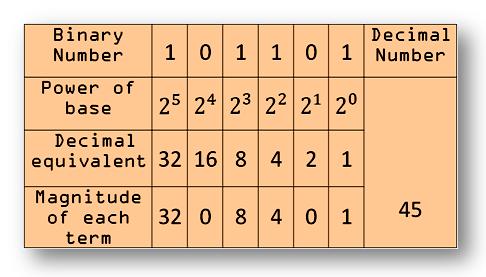
Binary point
= 1 × 22 + 1 × 21 + 1 × 20 + 1 × 2-1 + 0 × 2-2 + 1 × 2-3 + 1 × 2-4
= 4 + 2 + 1 + .5 + 0 + .125 + .0625
= 7.687510
The above results can be more clearly expressed in the following manner:
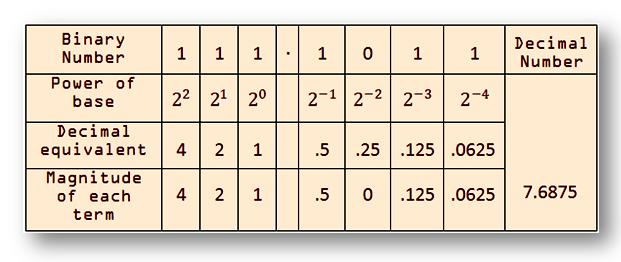
These are the basic examples shown above.
- Why Binary Numbers are Used
- Binary to Decimal Conversion
- Conversion of Numbers
- Hexa-decimal Number System
- Conversion of Binary Numbers to Octal or Hexa-decimal Numbers
- Octal and Hexa-Decimal Numbers
- Signed-magnitude Representation
- Radix Complement
- Diminished Radix Complement
- Arithmetic Operations of Binary Numbers
From Binary Number System to Home Page
Didn't find what you were looking for? Or want to know more information about Math Only Math. Use this Google Search to find what you need.
Recent Articles
-
How to Do Long Division? | Method | Steps | Examples | Worksheets |Ans
Apr 22, 25 12:42 PM
As we know that the division is to distribute a given value or quantity into groups having equal values. In long division, values at the individual place (Thousands, Hundreds, Tens, Ones) are dividend… -
Division of Four-Digit by a One-Digit Numbers | Worksheet with Answer
Apr 22, 25 12:12 PM
In division of four-digit by a one-digit numbers are discussed here step by step. How to divide 4-digit numbers by single-digit numbers? -
Skip Counting by 10's | Concept on Skip Counting |Skip Counting by Ten
Apr 22, 25 11:53 AM
The concept on skip counting by 10’s or tens is an essential skill to learn when making the jump from counting to basic addition. The sequence chart will help us to write the number to complete the se… -
Worksheets on Missing Numbers from 1 to 25 | Missing Number Worksheets
Apr 22, 25 11:28 AM
Printable worksheets on missing numbers from 1 to 25 help the kids to practice counting of the numbers. -
Conversion of a Decimal Fraction into a Fractional Number | Decimals
Apr 22, 25 02:52 AM
We will discuss here about the working rule for the conversion of a decimal fraction into a fractional number. The rules of converting decimal number to fraction are

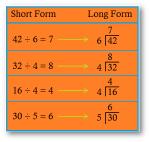
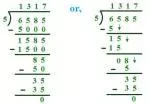
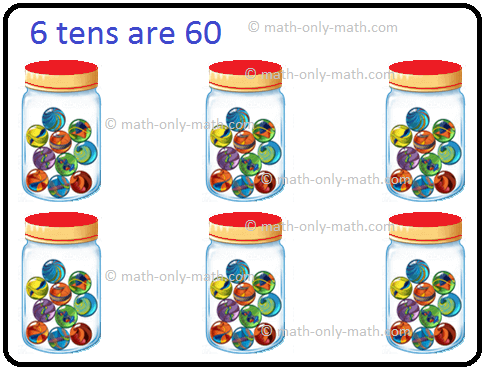
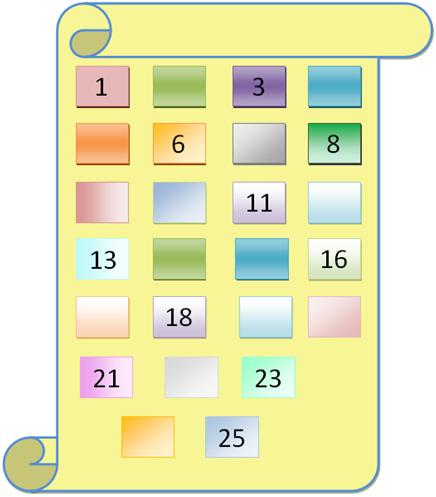
New! Comments
Have your say about what you just read! Leave me a comment in the box below. Ask a Question or Answer a Question.